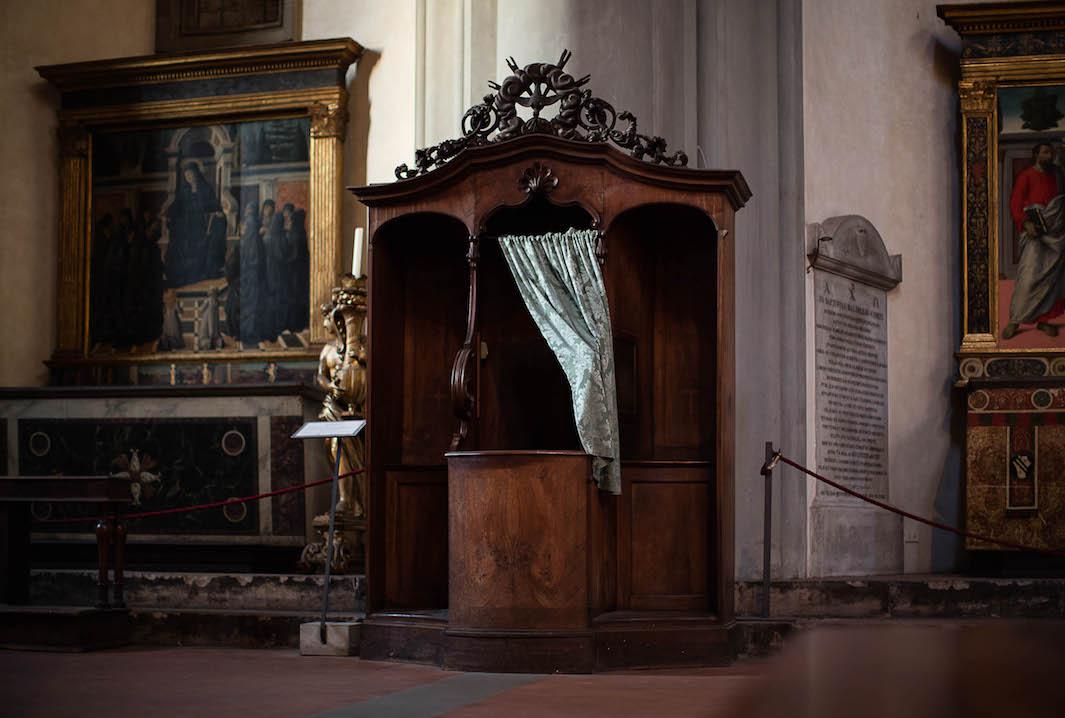The confessional is a special place in any Catholic Church, but in Marcella Hackbardt’s series “True Confessionals,” it takes on a distinct significance. Centered in their frames and largely shown in churches empty of people, Hackbardt’s confessionals strike viewers not as merely one feature among many in the architecture of faith, but as a theatrical space that services some fundamental human need—one that possibly transcends any particular religious dogma. As Hackbardt sees them, they’re “a powerful metaphor for self-perception and the examination of conscience.”
Hackbardt, an art professor at Kenyon College, was teaching in Rome in 2014 as part of an off-campus studies program when she photographed the confessional at the Basilica of Saint Sabina. She returned the following fall to visit more than 50 churches throughout the country. Hackbardt was raised Catholic, but she stopped going to church while she was still a child. Now, she considered confession with a newfound curiosity.
“You’re promised that you have the opportunity to repent, to have a knowledge of the self and then share it with someone, and then through that examination of conscience and sharing you have the promise of being relived of that and then moving on. The idea of repenting or examining one’s conscience isn’t as much a part of our society anymore. But that seemed to be alive and well in the churches. I became interested in that,” she said.
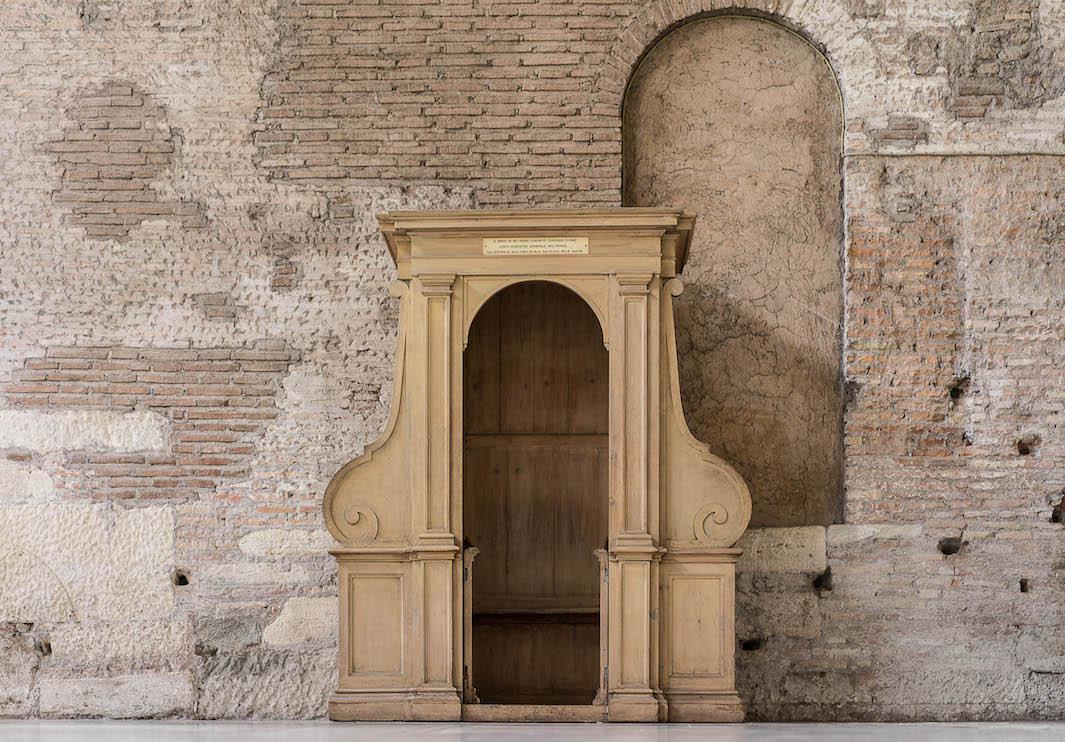
Marcella Hackbardt
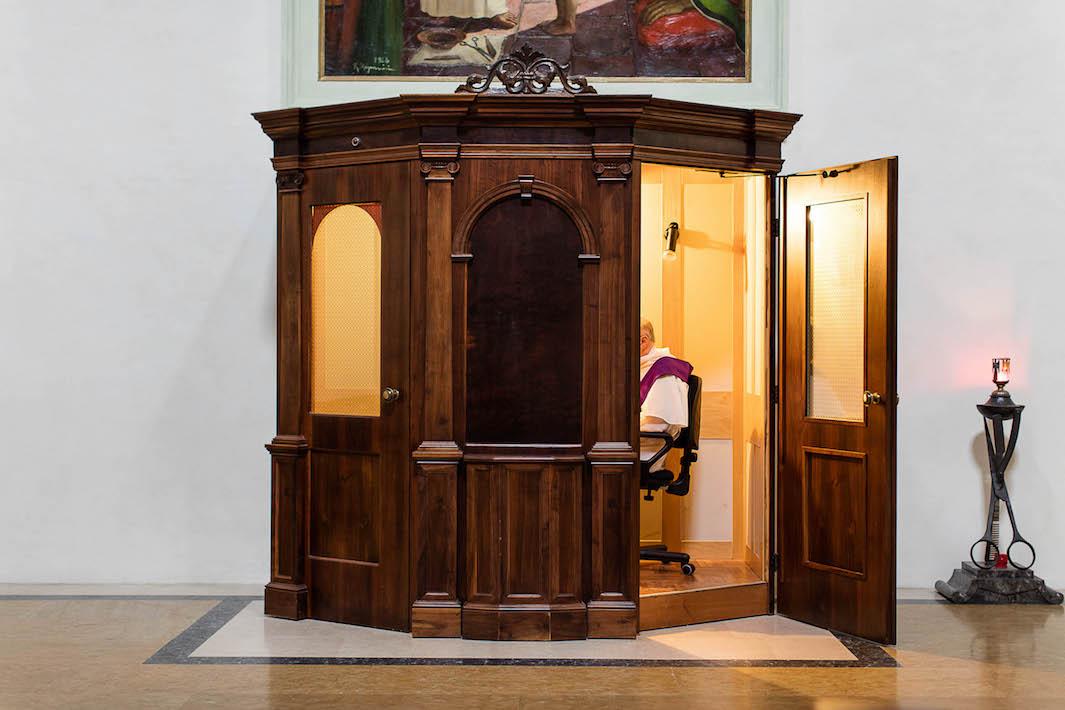
Marcella Hackbardt
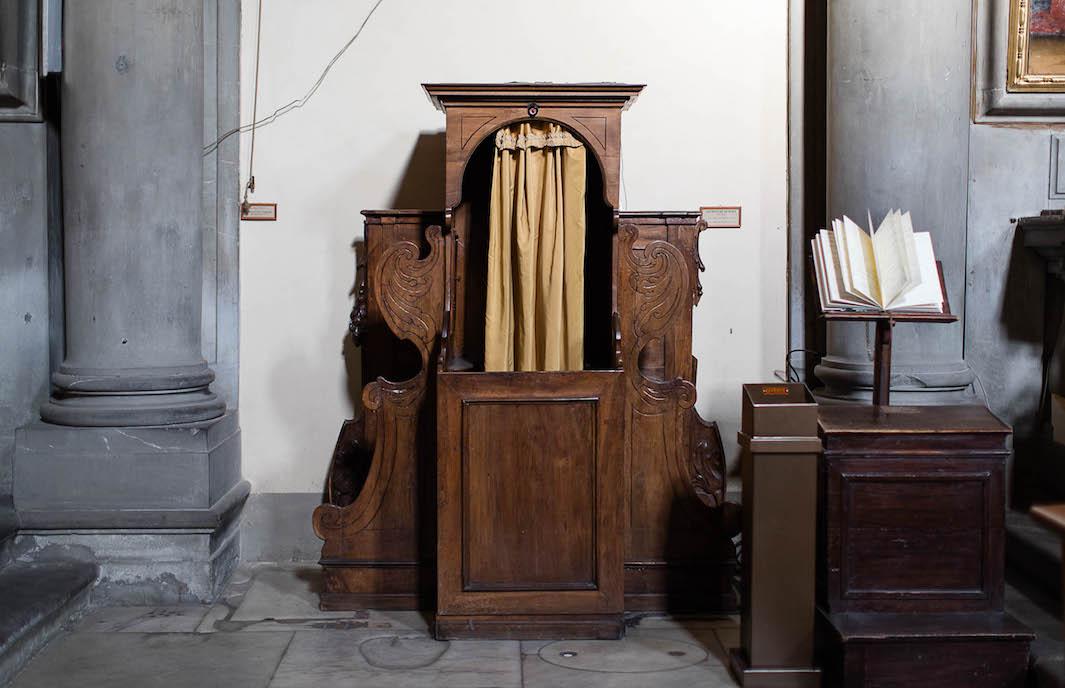
Marcella Hackbardt
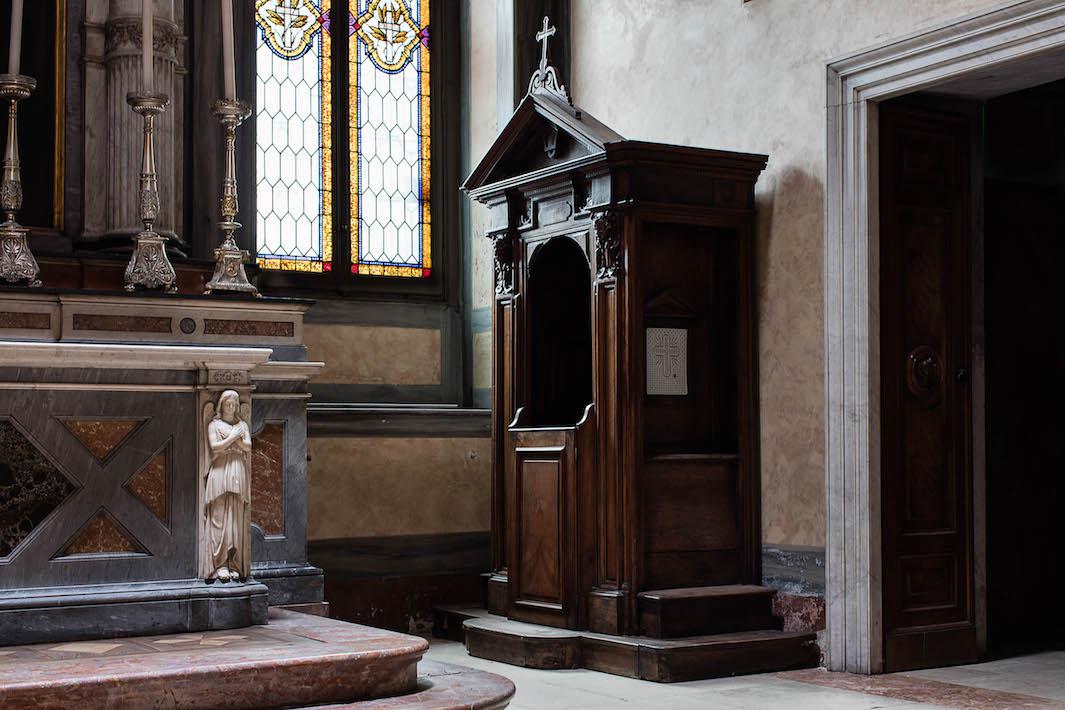
Marcella Hackbardt
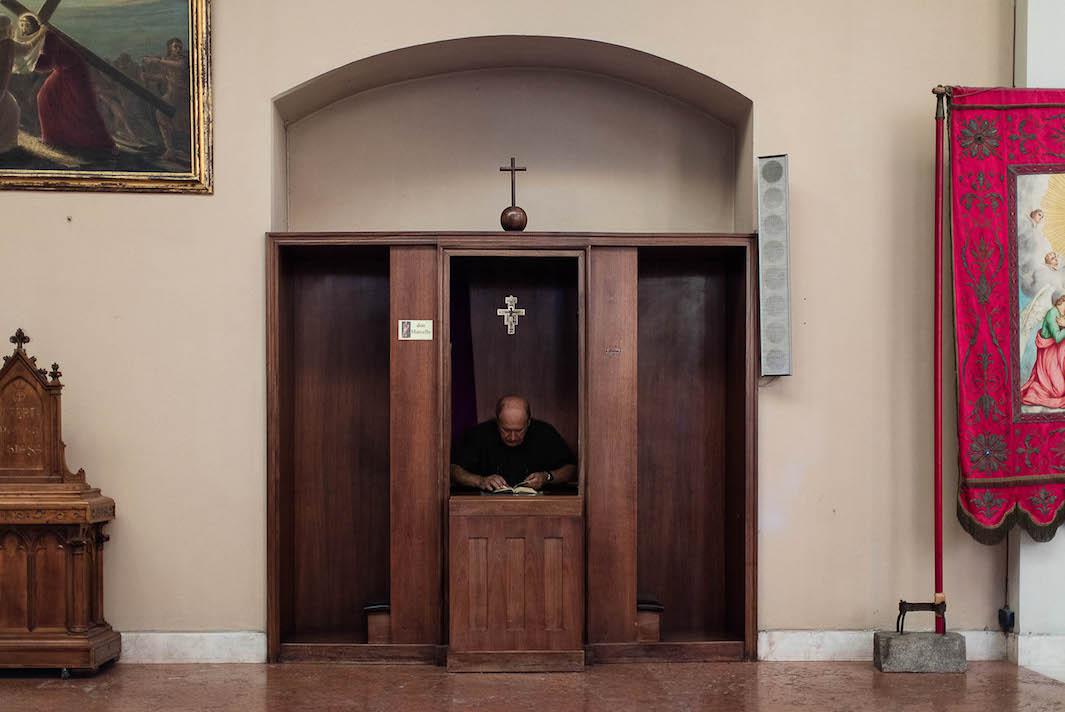
Marcella Hackbardt
In the tradition of Bernd and Hilla Becher, who are well-known for the methodical approach to photographing a wide variety water towers, Hackbardt, chose confessionals to photograph based on their formal idiosyncrasies. She appreciated the details—the color of the curtains or the woodwork—and she strove for diversity in the confessionals she picked. Photographing them, she said, was often difficult. In Rome, she struggled to work around the throngs of people crowding the churches. In some buildings, there was hardly any light. And in several cases, she had to photograph from the middle of the pews for lack of space.
Though Hackbardt mostly photographed the booths without anyone in or around them, she spoke with many people along the way about confession, which gave her a greater understanding and respect for the tradition. Personally, Hackbardt said, she’s only made a confession once in her life, when she was 8. It was for her first communion, and it wasn’t exactly successful.
“You had to have three things to confess, and of course I didn’t have any. So I said I stole a ball from my brother and lied to my mother. Then when I got out of the confessional, I spent most of the time in church apologizing to God that I’d lied to the church. I’d just committed the first sin I could remember,” she said.
“True Confessionals” will be on display at the Loyola University Museum of Art in Chicago from Aug. 20 until Jan. 8.
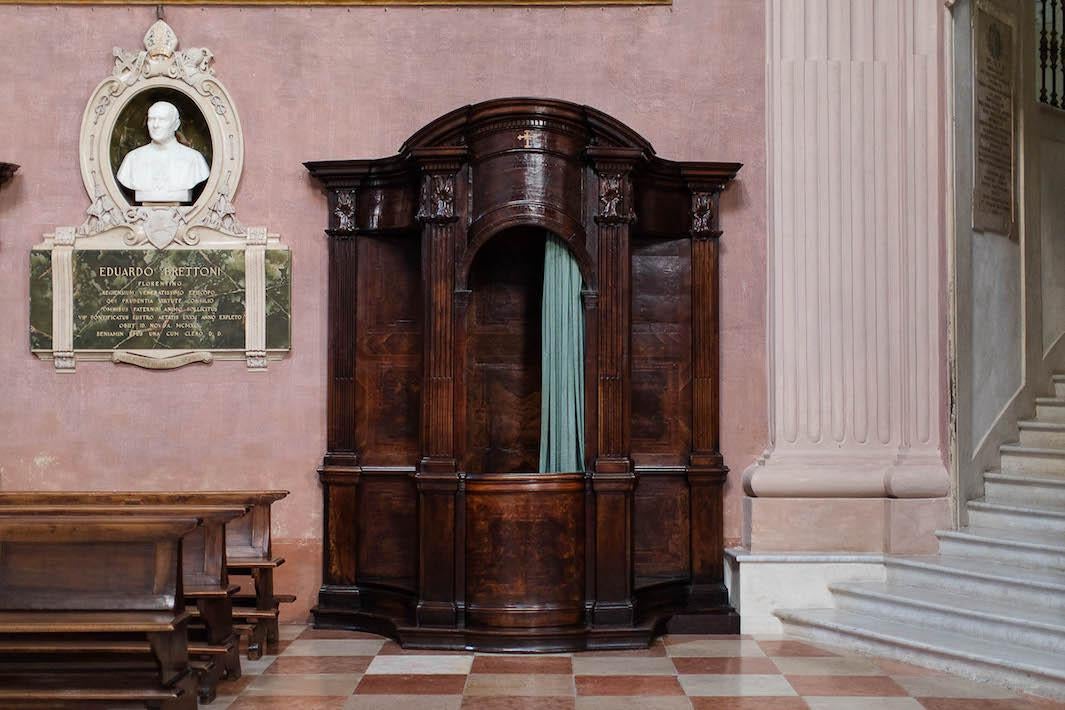
Marcella Hackbardt

Marcella Hackbardt
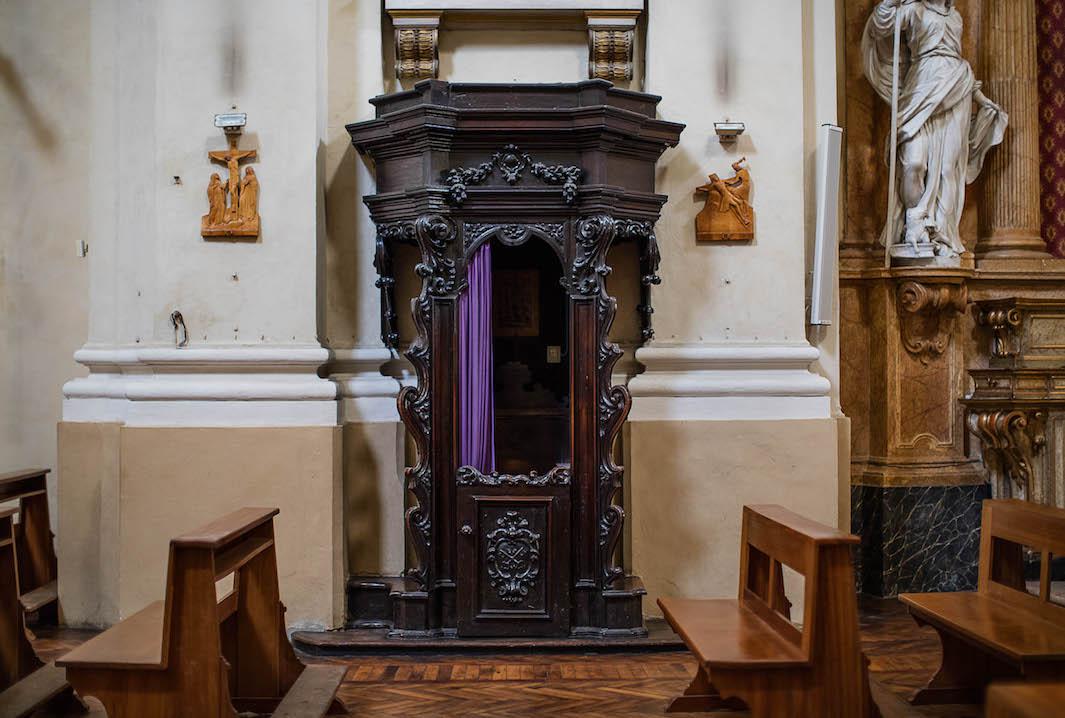
Marcella Hackbardt
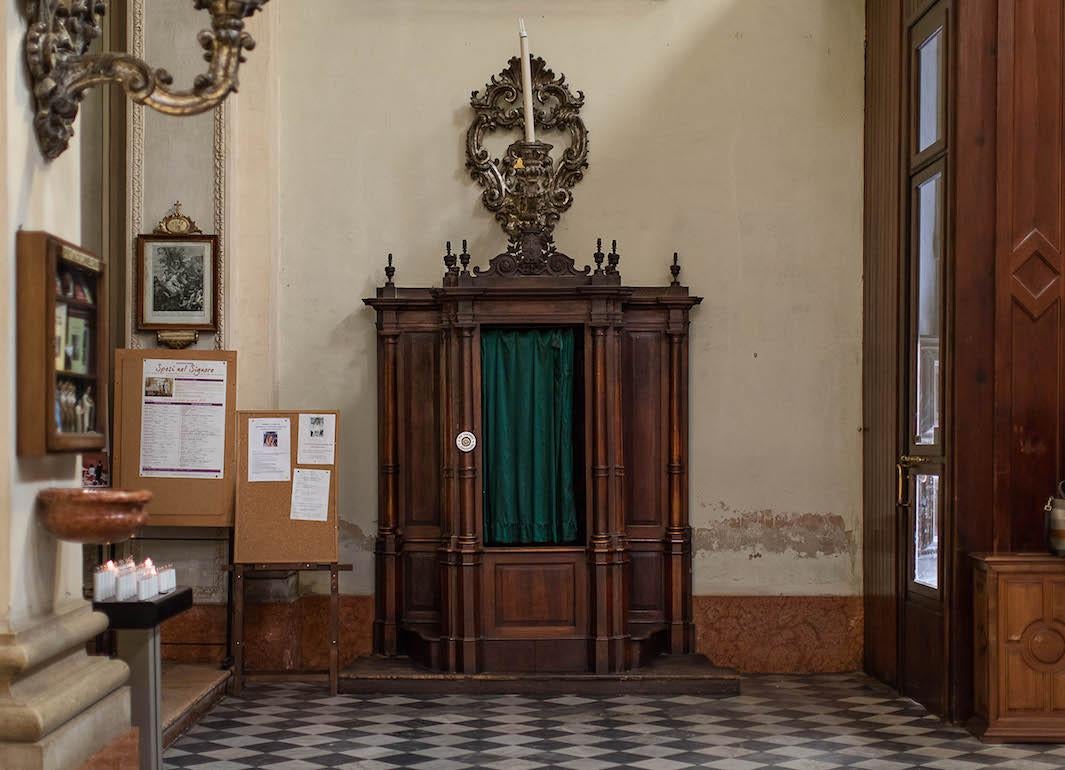
Marcella Hackbardt
